At the June Chapter Meeting, on June 26th, Pat Merkord, Executive Director of the Native Prairies Association of Texas (NPAT), will be the speaker. Topics will include an overview of NPAT, why prairies are important, plans for an Austin Chapter, and proposed prairie projects at Lake Granger.
Williamson County has three major ecosystems – the Edwards Plateau, the Blackland Prairie, and the Post Oak Savannah. Much of Interstate 35 is the boundary line between the hills of the Edwards Plateau and the flatter Blackland Prairie. A short drive to the far southeast corner of Williamson county leads you just enough higher in elevation that the habitat changes from the pastures and farms of the Blackland Prairie to the more forested Post Oak Savannah.
The Blackland Prairie has a special mix of soil and mineral deposits creating a rich dark soil sometimes described as black velvet. The region’s high productivity probably comes from abundant invertebrate animals and fungal flora found in the soil. The soil has much calcium carbonate creating a very alkaline growing medium.
Very little native prairie remains as the early settlers plowed the land for crops and later ranchers planted coastal hay for grazing and haying. The Ecoregion starts south of San Antonio and extends as a relatively small strip of land reaching the Oklahoma border. In the early 1800’s the land was covered with tall grass prairie with riparian zones with trees around the stream courses.
 Not a monoculture of plants rather a rich mixture of grasses and wildflowers. The original predominant grasses were Big Bluestem, Switch Grass, Little Bluestem and Indian Grass, plants that grow tall and produce seeds that feed many animals. In addition, many wildflowers grew interspersed with the tall grass. This mix of plants provided forage not only for the buffalo, but also many bird species and butterflies.
Not a monoculture of plants rather a rich mixture of grasses and wildflowers. The original predominant grasses were Big Bluestem, Switch Grass, Little Bluestem and Indian Grass, plants that grow tall and produce seeds that feed many animals. In addition, many wildflowers grew interspersed with the tall grass. This mix of plants provided forage not only for the buffalo, but also many bird species and butterflies.
The dickcissel is a sparrow like bird that lives in the prairie grasslands. As the native prairie has disappeared, its habitat has also declined. From 1966 to 1978,
the population declined and then stabilized. During the early summer it’s melodic call resonates across the tall grass expanse.
North of Dallas, the Parkland Prairie is a remnant of the Blackland Prairie that has been preserved. Managed by Collin County and the Nature Conservancy, it is a marvelous place to go and experience what the prairie used to be like. South of Dallas is Cedar Hill State Park with beautiful areas of restored prairie. Closer to Hutto, there is prairie restoration at the north end of Taylor Regional Park and Sports complex as well as below the dam at Lake Granger.
To bring a touch of the prairie closer to home, native tall grasses and wildflowers make beautiful ornamental additions to the home landscape. Winter sparrows will be attracted to the seeds. Native plants require less water and less care than non-native species. Whether planted in small flowerbeds, or creating a larger bed of tall grass prairie natives, you will enjoy seeing the wildlife that will visit.
For more information about how you can develop wildlife habitat at your house, visit Texas Parks and Wildlife’s Wildscapes: http://www.tpwd.state.tx.us/huntwild/wild/wildlife_diversity/wildscapes/ and for more information about other Texas prairies, visit Native Prairies Association of Texas: http://www.texasprairie.org/





You must be logged in to post a comment.